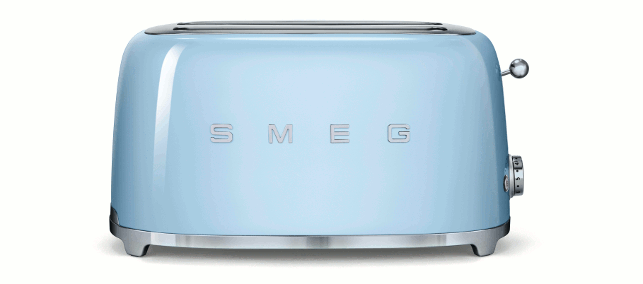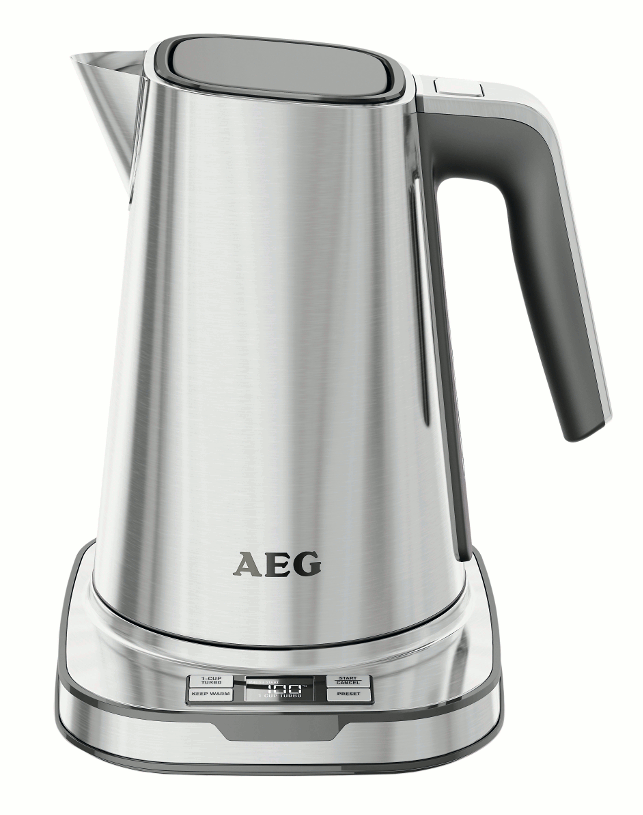Toasting success
In a sea of monochrome white goods, SMEG’s fridge freezers are a colourful retro icon, and now the company has expanded its fun designs to a range of small kitchen appliances.

SMEG was founded by Vittorio Bertazzoni Snr in 1948 when the company specialised in enamelling and metal working.
The name, SMEG, is an acronym Smalterie Metallurgiche Emiliane Guastalla, which roughly translates as smelting and metal enamelling plant in Guastalla, Emilia.
Designed by Italian design bureau Deep Design, the new appliance range, including this wonderfully curved toaster, hark back to the company’s heritage.
“Our fridge is a symbol of this natural and spontaneous feeling of affection, and the objective was to relay this same feeling into a new, contemporary and modern line,” states Deep Design’s Matteo Bazzicalupo.
“Apart from a great focus on the aesthetic side of the product, we concentrated on creating something robust and with high standards of functionality.”
The toaster’s retro exterior – partly influenced by the Zeppelin airships – contains thoroughly modern innards, including six levels of browning, and selfcentering racks for the perfect slice of toast in the morning.
Initial sketching is critical to the way Deep Design works enabling it to arrive at a concept for a new product.
“We are used to [this process as] it is the faster and better way for us to check if and how design ideas in our mind can match the physical reality,” says Bazzicalupo.
In the early concept development stages Deep Design uses card or foam models to evaluate the correct volume and proportions. According to Bazzicalupo this is to “keep the balance between the internal technical requirements and the beauty of the shape.”
The designers use the CAD tool Rhino 3D. Further on in the process 3D printed models are created from the data to check the aesthetics and particularly the ergonomics, before final models are fully mocked up to present to clients.
The ultimate vision for the new SMEG range was to create a design language of contemporary details with classic lines.
“These all came together to complement the form and especially the function, creating a unique expression and symbol which can be clearly seen with the final product,” concludes Bazzicalupo.
On the boil
Hot beverages can be the subject of much furious debate, but one thing that we can all agree on is that AEG’s 7 Series kettle has been designed by someone that loves a brew.
With five (five!) programmable temperature settings, you can enjoy your tea the way it’s meant to be: 80oC green tea, 85oC white tea, 90oC oolong tea, 95oC coffee, and 100oC for black and herbal teas, all shown in real-time on the digital LCD display during heat up.
A ‘Turbo’ function, for when there’s an ad break, or you’ve slept in late, boils 200ml of water in less than 60 seconds.

The performance factors of the entire 7 Series are the result of AEG’s professional range designs for Michelin Star chefs that have filtered down to the domestic kitchen – much like the automotive technology that has passed down from F1 teams to everyday family saloons.
Added to the function is the form factor. AEG Electrolux’s design team in Shanghai was responsible for the design, employing Autodesk Alias and Rhino to create the distinctive ‘squarecle’ (a soft square morphing into a circle at the base) body shape.
A single-piece body is made from stainless steel without a seam – having been produced using a stamping technique similar to that used in the manufacture of soft drink cans.
Prototyping proved important in developing ergonomic points such as the open handle and achieving the right pouring angle using foam models.
The final product meets the criteria of ‘attractive professional equipment’ – there’s never been a better timed brew.
A look at two trusty kitchen products that we use daily
Default






